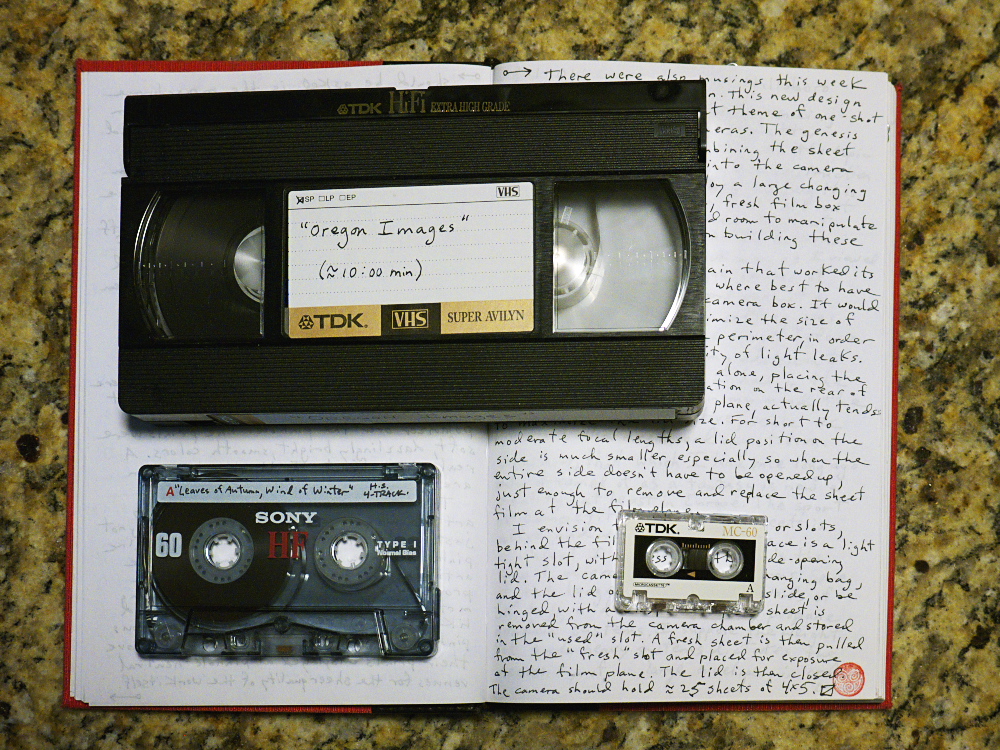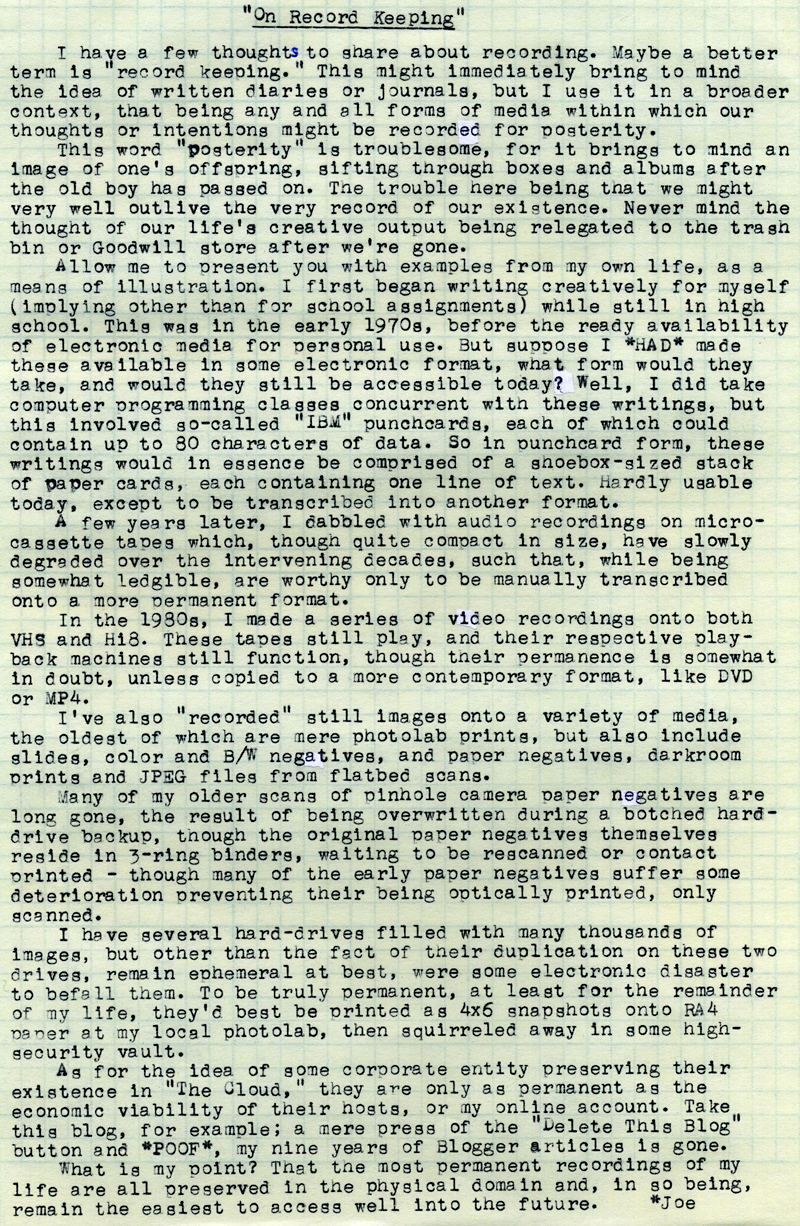On Record Keeping


Post-Script: I'm not naive enough to discount the possibility that physical media can suffer loss or degradation. Such is the erosion of life. We are reminded of the great stone works and monuments from antiquity, preserved for millennia, as an example of making one's mark permanent. But we too must remember that those ancient people's also had more fragile media, such as papyrus, that are now mostly lost to time. In our own age, we, just like the ancients, enjoy the choice of both fragile and more permanent media. Fragile media is easier to work, and less costly; think papyrus versus stone. A scroll of papyrus can be easily transported; not so stone engravings, or even clay tablet.
Digital media of today are like those fragile papyri from long ago: easy to work, affording distinct advantages over their predecessor formats, but questionable in longevity. Works on paper (writings, typings, photographs on archivally processed fiber paper) have become, ironically, the stone monuments of our age. Which begs the question of whether any of this will be around, a thousand years from now, as evidence of our existence; or is our only footprint to be the global changes wrought upon the natural world?
Photo via Lumix G5, typecast via Corona 4.

1 Comments:
I think mankind, since 1994-ish has relied on the mythos of ever-increasing and cheapening digital storage. The thinking went since hard drives were getting larger and cheaper every year, just keep transferring all of your previous data onto you newest hard drive, and still have room for new stuff.
That paradigm failed around 2010. average size of a $99 hard drive is still 1tb, same as the last 4 or 5 years.
Post a Comment
<< Home